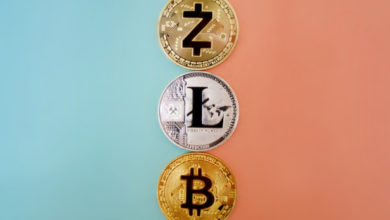Technology
Are Businesses Using Blockchain the Right Way?

Businesses are often deploying blockchain technology to address the same problems that conventional databases could handle, and don’t use the key strengths of the technology. How then is blockchain being deployed?
Technology research firm Gartner found that businesses are often using blockchain for shared record keeping and asset tracking. However, Gartner argues that they are not using the core strength of the technology – supporting decentralized, immutable data audit trails for exchanging a single version of transactional truth.
“That no one is using those innovative features calls into question why they’re using blockchain. Just go use a database,” said Avivah Litan, Vice President at Gartner.
As a result, blockchain’s shortcomings in comparison with conventional databases, such as slower transaction speed, have created the impression among IT leaders that the technology is not suitable for many enterprise projects. However, Gartner argues that the issue is not with blockchain technology itself. It’s the fact that it’s not being deployed in the right context.
In this article, we’ll have a look at why blockchain is not being used correctly and where and how it is being used instead.
Blockchain’s value is in cost reduction, transparency, and security
Blockchain’s strategic value is mainly in cost reduction. The technology can cut out costly intermediaries, and cryptocurrencies enable low-cost cross-border transactions. Other advantages of blockchain that can be applied by businesses are decentralization, cryptographic security, transparency and, allegedly, immutability.
Conventional databases excel at transaction throughput and query latency. They are better suited to store large amounts of non-transaction data and can execute transactions within milliseconds. On the flipside, they are centrally managed by a single authority, which means they are more prone to cyber-attacks and data manipulation.
So, if businesses were to use blockchain for other purposes, aside record keeping and asset tracking, what would it be?
While blockchain may not be mature enough for all enterprise use cases, the decentralized ledger can be used for self-executing contracts, otherwise known as “smart contract”. It doesn’t address the issue of data management; it cuts the middleman.
Smart contracts define the rules and penalties around an agreement in the same way that a traditional contract does, but it automatically enforces obligations. Thus, because it decreases costs and increases trust, smart contracts are popular in the supply chain. For commodities, this feature has proven highly popular among oil suppliers, such as the Abu Dhabi National Oil Company’s efforts to trace the oil from the wells to the end customer. South Korea started using the technology to track beef through the food supply chain to expedite the process, which used to make use of paper to record information. The project aims at increasing credibility by recording and tracking slaughter, packaging and transportation information. Also, we’ve seen efforts in the agriculture industry as well as the renewable energy sector.
The tracking via blockchain allows also has an ethical side. Most recently, we’ve covered how the technology is enabling the ethical sourcing of cobalt in the Democratic Republic of Congo. Ford Motor Company has announced that the technology will be used to validate and trace the mineral to eliminate child labour.
Smart contracts have a wide variety of use cases, which we can see by the most popular platform, Ethereum.
Therefore, the issue of not using the blockchain the right way leads us to another shortcoming – blockchain’s (lack of) capability to process the amount of work.
Blockchain can reduce costs, but not (yet) increase transaction speed
About 35% of all blockchain applications are developed in the financial industry, where blockchain could solve a lot of problems. The main areas are reducing costs by cutting out middlemen and facilitating bank-to-bank and international money transfers.
But blockchain isn’t known to work in use cases that require high transaction throughput. If we take money transfer, for example, blockchain isn’t expected to replace large-scale payment networks. However, many projects aim to change that. We’ve covered how seven major American universities partnered to develop a blockchain-based payment network that is expected to process 5,000 to 10,000 transactions per second, more than Visa.
The lack of scalability is one of the blockchain’s most known performance issues, and many are addressing this theoretical framework, attempting to provide better results. Indeed, the scalability challenge is seen as the most significant challenge holding back cryptocurrency adoption.
Bitcoin transaction speed is at 7 transactions per second, compared to Visa which can process about 1,700 transactions per second. Thus, it is unlikely that cryptocurrencies will replace fiat currencies any time soon. Digital currencies are still too volatile to be a feasible means of payment.
The other side of the coin
Also, despite the irregularity of the crypto market, countries are investing in the concept of digital currencies. Not only have we seen countries developing their own crypto, but collaboration is an essential factor in developing and adoption. Last month, Saudi Arabia and the UAE announced that they are working on a cross-border digital currency that will be strictly targeted for banks and will be developed on a blockchain database. By sharing a single version of the shared truth, blockchain enables parties that don’t trust each other to work together. It also allows more transactions to take place as less time is spent checking every single criterion off the list.
This puts into evidence a different side of the technology that isn’t focused on improving transaction time, but on guaranteed the safety of transactions as well as data transparency. For example, the standardization of know-your-customer compliance based on the blockchain and the digitalization of letter of credits speeds up bureaucratic procedures that otherwise takes a long time.
Hence why we’ve seen many initiatives to launch blockchain-powered platforms, either from banks, trading firms, or governmental institutions. Be it to foster a synergy by including an entire ecosystem on a single network, such as the consortium of 11 Indian banks to help businesses raise funds more transparently, or to finance the exchange of physical commodities through a digital distributed ledger-based system.
While there isn’t a widespread solution to the scalability issue, the other side of blockchain and digital currencies aren’t being neglected. However, these initiatives are proof that if there is an absence of large, reliable financial institutions in the equation, it is likely that the efforts will be concentrated on addressing a specific industry issue or used by a small number of players.
The challenge of solving human issues
Another widely discussed use case for blockchain technology is in health care. Medical records could be stored securely on a blockchain so patients can carry a lifetime health record with them and pull it up whenever they have to visit their doctor. It is even being used to fight fake medicine by putting the entire supply chain on the blockchain.
While digital records may be immutable and verifiable, blockchain cannot link the digital record to a real-life human being. It can’t verify, that perhaps the most crucial step of verification is happening correctly.
Thus, at the interface between the offline world and its digital representation, there still needs to be a trusted intermediary to bridge the last mile between the digital records and the physical individual.
Looking at the example of healthcare, we would still need humans or another technology to match the health record and the patient’s identity. If that goes wrong, or if malicious humans manipulate the data when it is entered into a system that is believed to be immutable, blockchain technology cannot provide solutions.
The same goes for other applications such as supply chain provenance or government transparency. Yes, blockchain can create transparency as everyone can view records stored on a public ledger. But as great as it is for secure and transparent recordkeeping, it cannot guarantee that people enter correct data or use data in the right way.
In other words: blockchain can create evidence of corruption, but that doesn’t mean people will act on it. Overall, blockchain is just a technology. It cannot solve human issues. As mentioned above, all those initiatives are based on the fact that blockchain and smart contracts provide transparency, which in turn creates trust from customers. However, it doesn’t address the fact that blockchain can’t fix what was corrupted from the beginning.
The use cases are out there, but plug-n-play solutions are not. Blockchain shouldn’t be a technology in search of a problem. Businesses have specific issues, and the challenge is to identify the most suitable technology to address those issues. Whether that’s blockchain, traditional databases, AI, or robotics is irrelevant, as long as the problem gets solved.
We can then conclude that for blockchain to be used for its core mission – as a decentralized ledger that supports immutable data audits trails to exchange a single version of transactional truth – it needs to be adopted by all. To democratize control, to eliminate central authority and to share a single version of the truth may not be the ideal business model for all the industries. Yet, we can rest assured that blockchain is improving the way business is conducted.




Thanks for your article. It is very unfortunate that over the last decade, the travel industry has had to take on terrorism, SARS, tsunamis, bird flu virus, swine flu, along with the first ever entire global economic depression. Through everything the industry has really proven to be sturdy, resilient plus dynamic, finding new methods to deal with hardship. There are always fresh troubles and opportunities to which the business must all over again adapt and react.
excellent post, very informative. I wonder why the other experts of this sector do not notice this. You should continue your writing. I’m confident, you have a great readers’ base already!
You have observed very interesting details! ps nice site. “Ask me no questions, and I’ll tell you no fibs.” by Oliver Goldsmith.
Woah! I’m really enjoying the template/theme of this site. It’s simple, yet effective. A lot of times it’s very hard to get that “perfect balance” between usability and visual appeal. I must say that you’ve done a awesome job with this. In addition, the blog loads extremely fast for me on Firefox. Exceptional Blog!
It’s really a nice and useful piece of information. I’m happy that you shared this helpful information with us. Please stay us up to date like this. Thanks for sharing.
Thanks for revealing your ideas on this blog. Additionally, a delusion regarding the banking institutions intentions any time talking about home foreclosure is that the loan company will not have my installments. There is a certain amount of time which the bank will take payments here and there. If you are too deep inside the hole, they are going to commonly require that you pay the particular payment 100 . However, that doesn’t mean that they will have any sort of repayments at all. When you and the standard bank can be capable to work a little something out, the particular foreclosure practice may cease. However, should you continue to miss out on payments under the new strategy, the foreclosure process can just pick up from where it was left off.
It’s appropriate time to make some plans for the future and it is time to be happy. I have read this post and if I could I want to suggest you few interesting things or suggestions. Maybe you could write next articles referring to this article. I wish to read even more things about it!